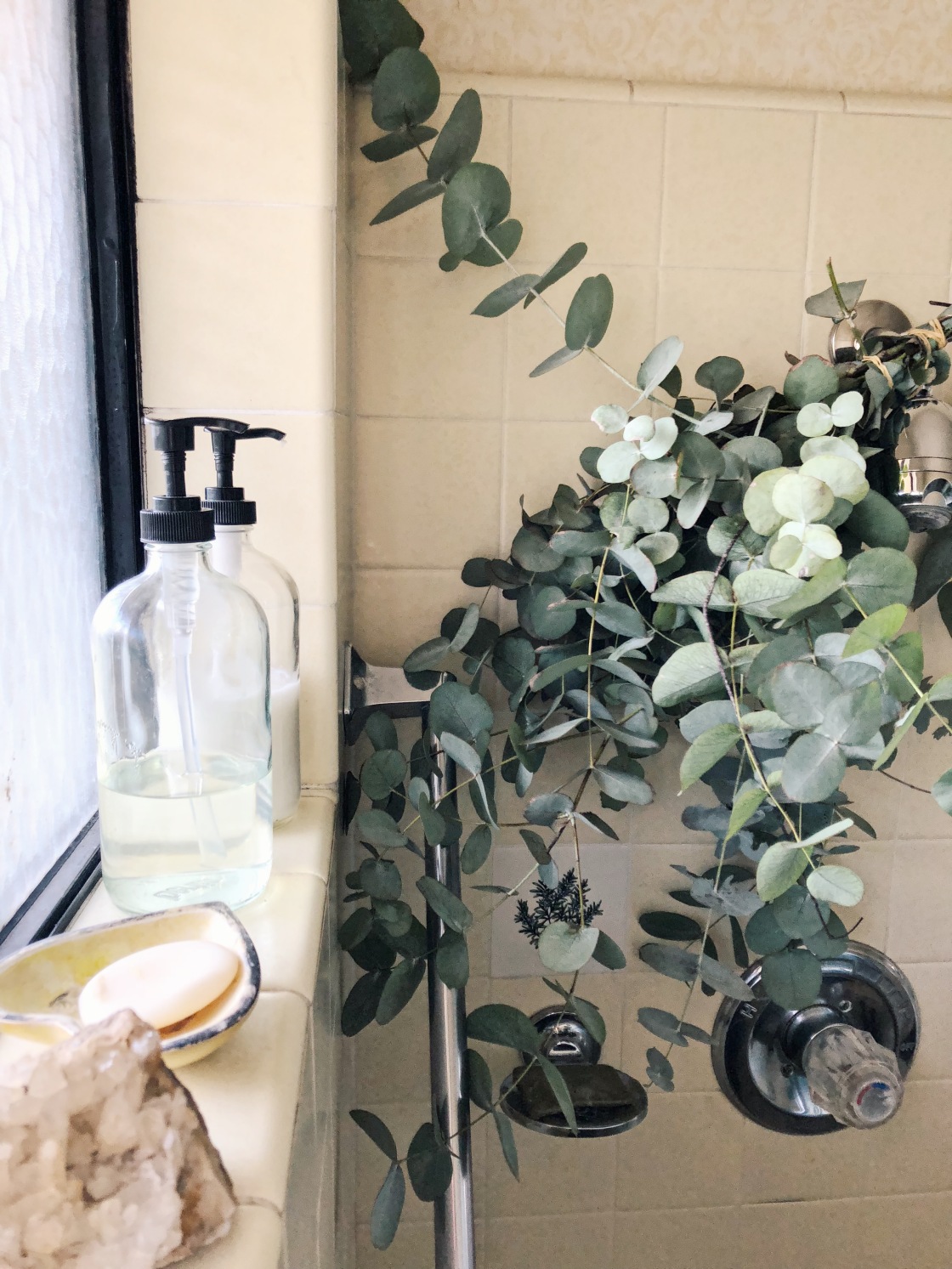
shower: bulk shampoo + conditioner, bar soap, foraged eucalyptus for soothing steam
Continuing with our “zero” waste home series, lets tackle the bathroom. After the kitchen, the second trashiest place in the house for us was definitely the bathroom. Giant plastic wrapped packages of toilet paper, huge plastic packs of q tips, plastic containers of serums and creams and sunscreens and toothpaste and floss. Having less in the bathroom means less to clean (and an easier time cleaning without having to move a bunch of stuff around), less money spent, and a more peaceful/calm environment.
As with the kitchen, the easiest thing to do here in examine the contents of the trash and replace disposables with reusables or recyclables. I also simplified a lot, no need to have 10 products when just one does the trick. Here’s what we did to lower our waste here:
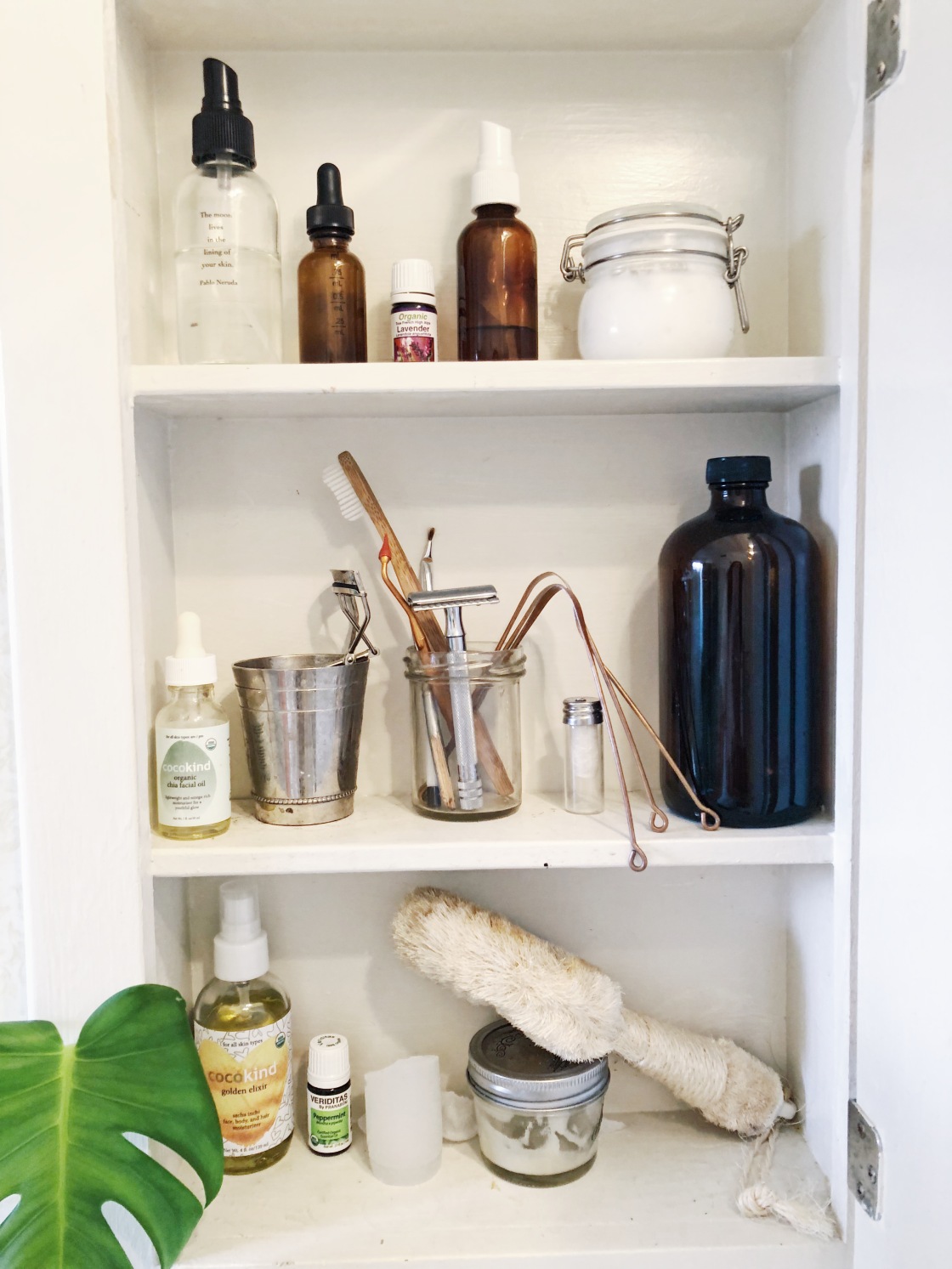
toilet paper: definitely one of THE most common questions I get. Yes, we still use tp lol. I’ve just switched from our giant Costco wrapped plastic package to individually wrapped paper ones (like the ones at restaurants, hotels etc). I buy a case at my local coop of Natural Value toilet paper and it comes in a cardboard box, is 100% recycled and unbleached, and i get a discount for buying by the case. They are also sold individually in case you want to try it out before you commit. We also have this bidet which I’ve been using for 6 years, personally I use it after I pee (tmi? I have no shame) and then wipe with a reusable cloth wipe from Vin’s cloth diaper days (see a homemade baby wipe solution here if you have babies). Some people use this after pooping too but I’m not into it.
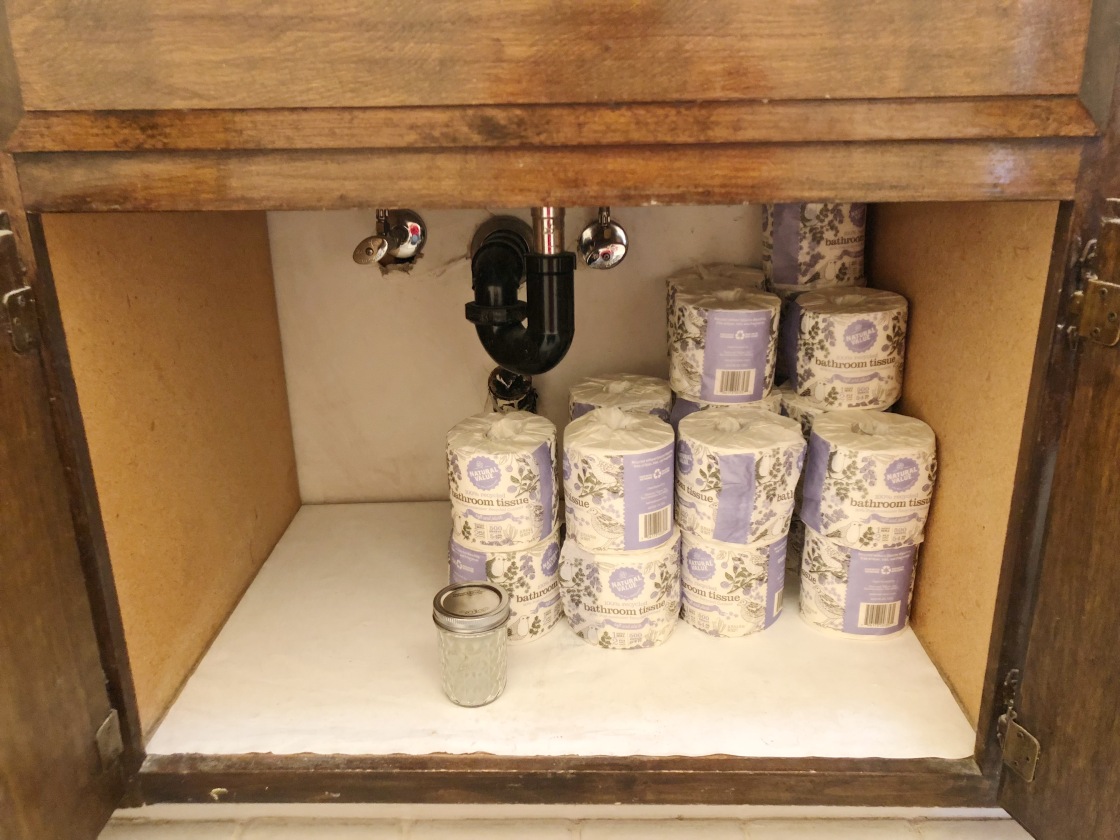
under the sink: tp + some bulk clay for masks
kleenex/tissues: tissues are expensive, wasteful, and not hygienic- as Arianna of Paris To Go points out, “Throw a used Kleenex into the garbage, and the virus remains viable- in fact, rhinoviruses stay infectious in landfills. Compare an embroidered cloth handkerchief to this. Which is grosser?” I just use squares of cloth sewn or cut from old sheets, I’m sure you could thrift some or put on Etsy.
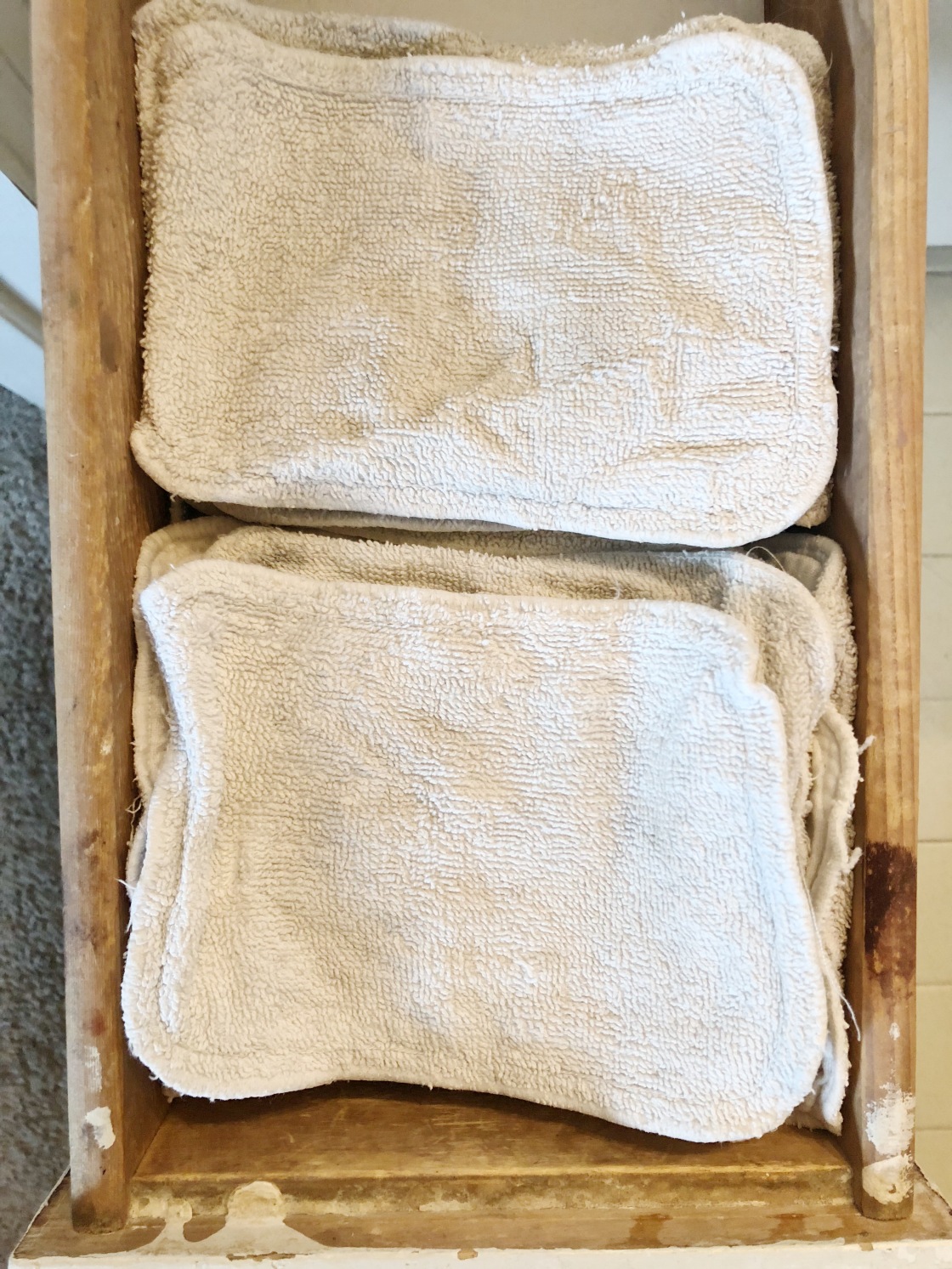
reusable wipes
razor: one of the easiest and most cost effective switches, I simply use this safety razor instead of a disposable one. It’s NOT scary to use (same as a regular razor) and the blades are super cheap + last forever if you dry between uses. My husband and I have shared the same one for 6 years, I actually bought it before I even knew about zero waste because I hated paying so much money for disposables. We deposit the blades in an can and crimp it closed so it can get recycled without hurting anyone. You can also send them back to Albatross Shaving Company to recycle if your district does not accept blades for recycling.
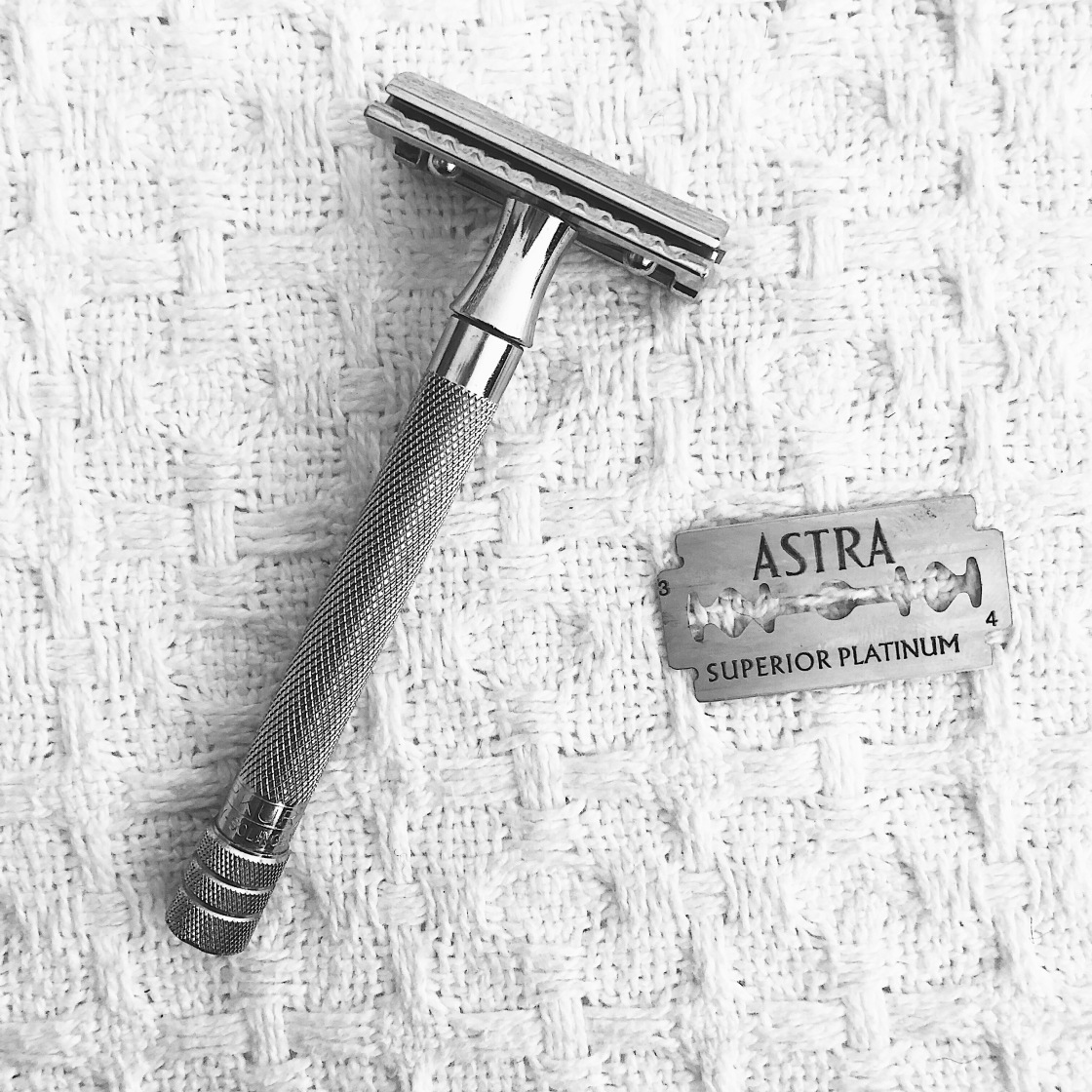
shaving cream, shower gel, hand soap: we simply switched to a richly lathering, oil based bar soap. We used the Kiss My Face unscented olive oil soap for years (comes in paper, long lasting, palm oil free, simple ingredients, widely available) but have recently switched to a locally made olive oil soap which uses their own old/unsaleable locally grown and pressed olive oil (more sustainable). One bar lives at the sink and one bar lives in the shower and makes for a simple, cheap, and pretty swap.
deodorant: we use an alum stone for deodorant, like this one. Other options include DIY, or buying an option in glass, metal, or paper, like this Meow Meow Tweet Tweet baking soda free vegan deo. I prefer the alum stone as a simple, long lasting swap that I don’t need to make or worry about buying frequently. Easy to travel with, too. Some of you have mentioned that you use ACV, tea tree oil, or a lemon wedges applied directly to pits with fantastic results, too.
shampoo and conditioner: we buy in bulk from Refill Madness in Sacramento, the brand is Griffin Remedy and they are a local to us bay area company. I buy them in upcycled kombucha bottles with upcycled plastic pumps. I’ve also trained my hair to only need once a week washing, which reduces my consumption here, thanks to Arianna whose perfect curls are totally water only for 3 years (check out her blog for more info here) If you don’t have access to bulk, other options include a bar shampoo or conditioner, or Plaine products who sells in refillable and returnable aluminum bottles. I tried using the baking soda/ACV method for a few months and it absolutely ruined my hair. Later I found that baking soda destroys hair keratin and ACV disrupts the natural pH. Some people swear by it though.
toothbrush: we use brush with bamboo, which is compostable except for the nylon bristles. When it’s time to get a new brush, I use the old one for cleaning grout. At the end of it’s life there, I pull out the bristles with a plier (landfill) and compost the handle.
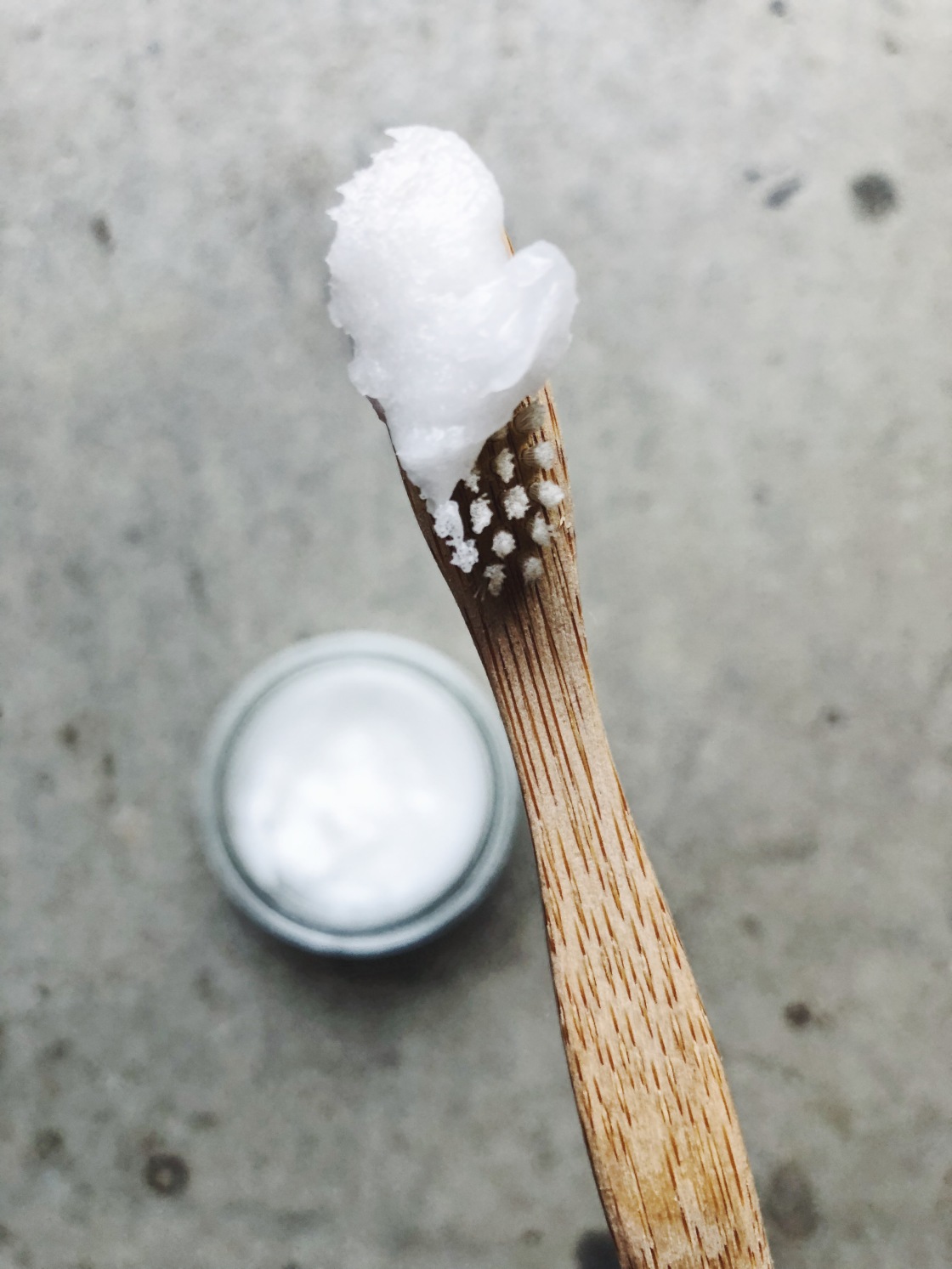
toothpaste: we DIY our own. Check out this post for the recipe and a bunch of other low waste options to buy.
floss: Dental Lace (silk, in refillable glass and metal, made in USA) or Noosa Basics (not refillable, but recyclable, vegan, made in AUS) both are compostable. I also use an old rubber tipped brass gum stimulator and my old waterpik and a copper tongue scraper (I’m kind of a dental hygiene freak).
makeup: personally this has been one of the hardest areas. Check out this post for what I use and recycling information.
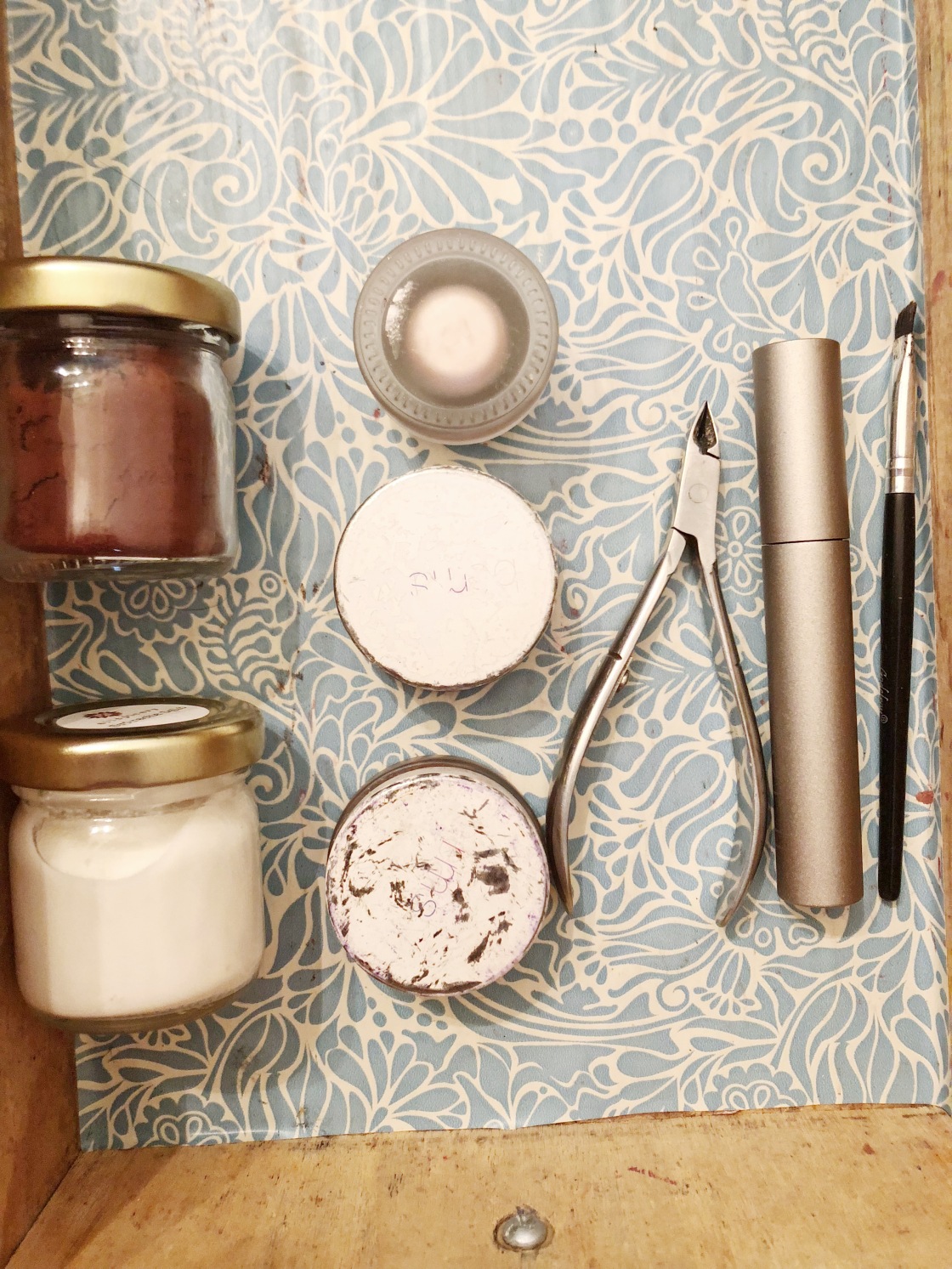
nail polish: I don’t use it anymore, I just clip and file my nails and use a little balm for shine. My nails have gotten so much healthier and strong this way. Polish and remover are super toxic (even “natural” ones) and I had been struggling with knowing this but still using it for ages. Obviously this is a personal decision though. You can find stainless clippers and files package free at most beauty stores.
q tips: are not good for your ears, really- I personally don’t use them, preferring instead to stick my pinky inside a thin washcloth wrung out in warm water and wipe any excess wax away. My husband likes them, we are still using up our giant costco box of them. If you get the paper ones, they’re compostable. There’s also stainless steel ear cleaning tools that some people like.
tampons/pads: my 6 year old Diva Cup is still going strong and has more than paid for itself. I clean in between with soap and water, and boil at the end of each cycle. It’s so convenient, easy to travel with, doesn’t leak, and is way more comfortable. A couple months ago I got caught out when my period started and I didn’t have my cup with me. I had to use a tampon from a restroom dispenser and I couldn’t believe how incredibly uncomfortable it was. Reusable pads or undies are good options if you prefer that.
hair products: I find with once a week washing, my hair issues have resolved themselves and I’ve learned to embrace my natural imperfect wavy texture, which leaves me with so much more time. I run a teensy bit of oil through the ends (the golden elixir from Coco Kind, same one I use on my face).
body: I’ve been using the Coco Kind oil mentioned above or coconut oil, use what’s available in bulk in your area. I don’t like lotions because they feel tacky and don’t absorb properly into my skin, personally. Oils give you a little glow, too.
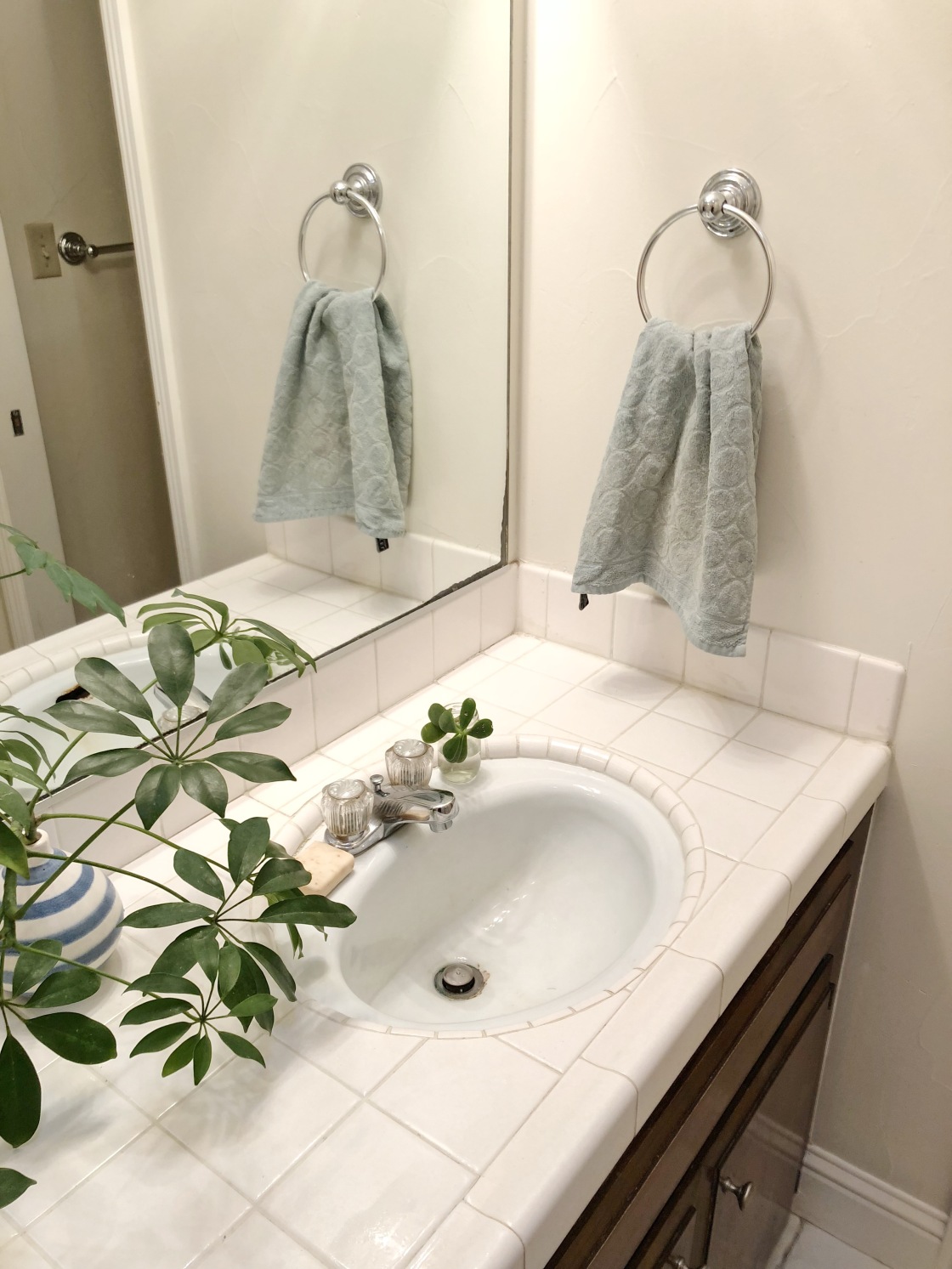
exfoliating and masks: I use a washcloth, gently. My skin hates exfoliating products anyways (it’s sensitive). Some people use baking soda or finely milled natural grains or moss for exfoliant (like this one in glass). Sometimes I use bulk clay with water or ACV for a mask.
water saving: I’ve installed low flow shower heads and low flow faucet aerators, you can hardly tell a difference and it saves a lot of water. We live in drought prone CA, so this is a must. I also keep a metal bucket under the sink and put it under the shower while waiting for the water to warm up. That water can be used on plants or to fill up the back of the toilet.
cleaning: as with other areas of the house, I simply clean with castile soap, vinegar and baking soda here + natural fiber brushes (similar to this) that can be composted at the end of their life, and lint free cotton towels like these.
I think that’s it…let me know if I’ve missed something or if you need further clarification, I feel like I can’t remember all the stuff we used to use!